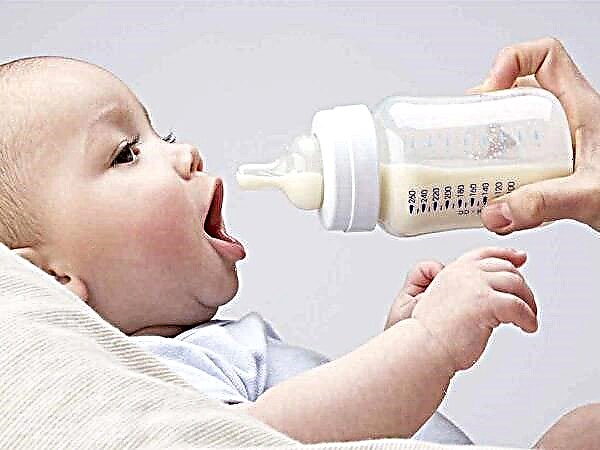
A runny nose is an unpleasant symptom that prevents the child from breathing, eating and sleeping, so parents try to help the baby in any way. One of the fairly common methods to eliminate a runny nose is inhalation, but before giving them to a child, it is worth finding out at what age it is permissible, how inhalation affects a child with a runny nose and how best to carry out such procedures.

Operating principle
Inhalation for a cold works like this:
- Moisturizes mucous membrane;
- Liquefies mucus which has accumulated and thickened in the nasal passages;
- Removes excess mucusformed in the nose.
This procedure does not affect the cause of rhinitis, in particular allergens, viruses or bacteria, but it improves the baby's condition and helps speed up recovery.
Indications
The main purpose of inhalations for children with a runny nose is to moisturize, therefore, inhalations are recommended for drying mucus in the nasopharynx, and steam procedures are most effective. They usually use a pot of boiling liquid or a steam inhaler., in this case, the use of a special device is more preferable, since a pan with boiling water can cause burns, for example, from too hot steam or due to overturning of the pan.

When shouldn't inhalation be done?
The procedure is not recommended if:
- The child has thick greenish snot, appearing with purulent rhinitis.
- Discharge from the nose is found blood.
- The kid complains about pain or congestion in the ears.
- The child's body temperature is elevated.
- Mucus from the nose is released freely and the mucous membrane is constantly moist.
Why there are such contraindications, Dr. Komarovsky will tell in detail in the video presented.
Can inhalation be done with a nebulizer?
Using a nebulizer for inhalation, which should act on the nasal mucosa, is considered ineffective. Such a device converts the treatment solution into particles so small that they pass through the nose and fall much lower than the desired effect (for example, into the larynx or bronchi). At best, the child will not get any benefit from nebulizer inhalation, and at worst, such a procedure can cause a worsening of the condition.
What drugs are better for inhalation?
Most often, for procedures that help with a cold, they use saline... It can be either a pharmacy preparation or a home-made solution of sodium chloride (per liter of water, teaspoon of salt). In addition to saline for inhalation from the common cold you can use essential oils. Since they have a longer effect, inhalations with such oils are usually carried out at night.

Solutions recommended for nebulizer inhalation, for example, dioxidine and miramistin, are often ineffective for a cold. In a steam inhaler, their active substances are either destroyed due to strong heating, or they do not evaporate with water, remaining in the device.
Why is inhalation not carried out at the same time for cough and cold?
The place of exposure of the aerosol particles of the drug depends on their size. If these are particles with a size of 8-10 microns, they will settle in the nose, an aerosol of particles of 6-8 microns affects the larynx, and particles up to 5 microns penetrate the bronchi and lungs. That is why effective inhalation for coughing does not help get rid of a runny nose, and procedures that moisturize the nasal mucosa well will not be effective for coughing.

Is it possible to do inhalations from a cold to infants?
Procedures under the age of one year are not recommended. Even in preschoolers, inhalation can be performed only after consulting a doctor. This is due to narrow nasal passages at an early age. As a result of inhalation, the mucus swells and blocks them, which often causes otitis media. In addition, it is quite difficult to hold a baby over the inhaler, and using a pot of steam is very dangerous.
How to inhale?
- Pour 10 to 20 ml of saline into the steam inhaler.
- Plug in the device.
- As soon as steam starts to escape, apply a mask to the child's face.
- Tell your baby to breathe through his nose.
- Complete the procedure after 3-4 minutes.
- Perform up to 3 inhalations a day.
When carrying out the procedure over a pot of boiling water, the baby should hold his head so that breathing is comfortable, a steam burn was excluded, but the temperature of the inhaled steam was quite high. Cover the head with a towel, and an adult should always be seated nearby to eliminate the risk of overturning the pan.
For more information on how to properly carry out inhalations, see a special video prepared by the Union of Pediatricians of Russia:
Tips
Do not use natural juices of onion, garlic and aloe for steam inhalations from the common cold. Phytoncides from them help in getting rid of bacterial infections, however, a purulent lesion is a contraindication to steam inhalation, and the use of another type of inhalation will not deliver phytoncides to the cells of the nasal mucosa. And therefore, such remedies are ineffective for inhalation from the common cold.
It is also not recommended to do inhalation with herbal decoctions, for example, from string, eucalyptus or chamomile. They are known for their anti-inflammatory properties, but with a cold, they can provoke the further development of infection. Procedures with such decoctions are permissible only at the end of the acute phase of the disease., when the child's nose is still stuffy, but this condition usually quickly passes without inhalation with chamomile.




